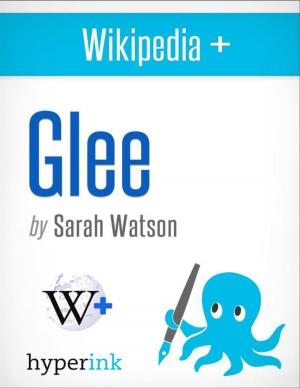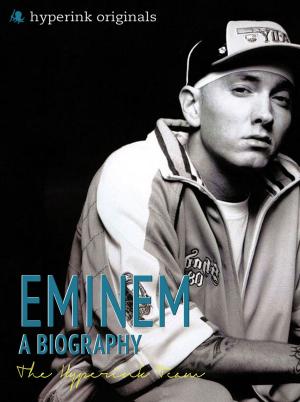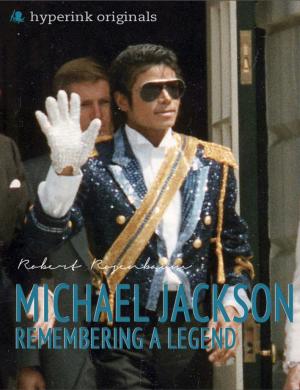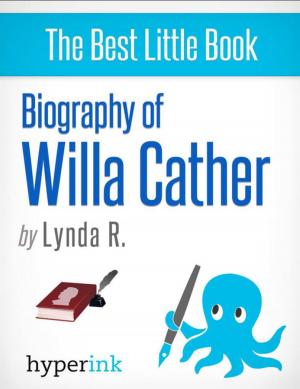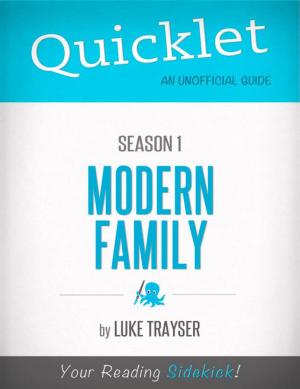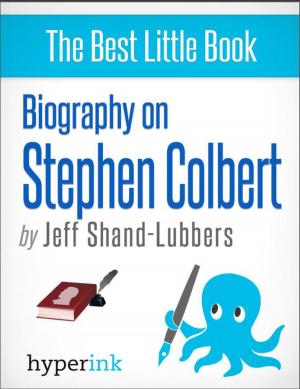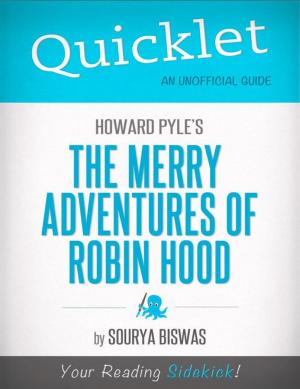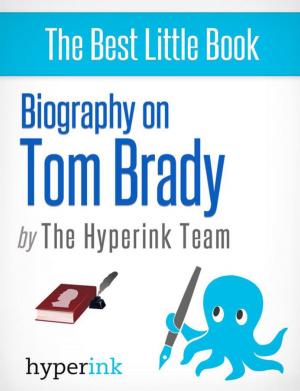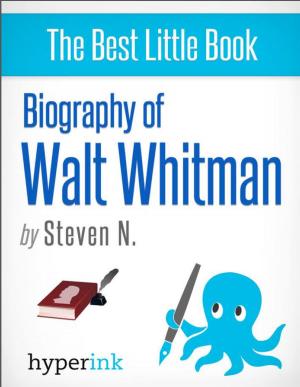Quicklet on John Knowles' A Separate Peace (CliffNotes-like Book Summary and Analysis)
Nonfiction, Reference & Language, Study Aids, Book Notes, Art & Architecture, General Art| Author: | Anna Wood | ISBN: | 9781614646792 |
| Publisher: | Hyperink | Publication: | July 30, 2012 |
| Imprint: | Hyperink | Language: | English |
| Author: | Anna Wood |
| ISBN: | 9781614646792 |
| Publisher: | Hyperink |
| Publication: | July 30, 2012 |
| Imprint: | Hyperink |
| Language: | English |
ABOUT THE BOOK
Is it possible to be at peace while your country is at war? Today, the answer to that question often seems to be a decisive yes; while the United States is entangled in military conflicts in numerous far-away countries, the average American citizen is able to lead a largely untouched life. Except perhaps for the price of gas at the pump, itself more an economic than political ramification, we face few harsh reminders about the wars that are being fought in our name.
This was not always the case. When John Knowles, author of A Separate Peace, sat down to write a novel inspired by his experiences as a high school student during World War II, he was reflecting on an era that demanded far more sacrifices from the average U.S. citizen. In addition to the food and fuel shortages that affected even the upper-class rungs of society that Knowles was part of, people were also forced to live with the war as an enormous psychological specter that was nearly impossible to ignore.
Because of the novel’s frank and emotional portrayal of the way in which youths experienced World War II, A Separate Peace is considered a classic of modern American literature and is a staple of high school curriculums, still appearing regularly on bestseller lists, such as the January 23-29 2012 list in the Boston Globe. According to the Los Angeles Times, Knowles felt incredibly validated by the book’s popularity, explaining, “What touches me most, what pleases me most, is that people who are far removed from the world of prep schools love it.”
The world depicted in the pages of this novel is based largely on the one Knowles himself knew as a teenager in the early 1940s. Devon, the fictional school attended by the books’ characters, is modeled closely after Phillips Exeter Academy, an elite college preparatory school in New Hampshire, where Knowles himself studied. Many of the historical details of the book—such as the apple harvesting, the shoveling work at the railroad, the absence of senior faculty, and the disappearance of maids from the campus—are ones Knowles experienced directly as a student. Howard T. Easton, a former instructor at Exeter, published a reflection about the school’s culture during the war in The Exonian, in which he recalls, “We all had to adapt to unusual circumstances, some of them quite trying.”
In addition to being a faithful rendition of a particular historical time and place, A Separate Peace also offers readers a timeless depiction of friendship, the struggles of adolescence and the loss of innocence. Just as the main characters are unable to hide from the war, they are also unable to forestall the onset of adulthood, a transition that marks the end of the carefree, naïve happiness they knew as boys during the summer session. Each character grapples with these changes in his own way, but in the end, none of them is left unchanged.k
EXCERPT FROM THE BOOK
Fifteen years after graduating from the Devon School, a college preparatory school for wealthy young boys, Gene Forrester returns to campus for the first time. There are two places in particular he aims to visit: a marble staircase in one of the school’s halls and a certain tree on the edge of the Devon River.
Upon reaching the staircase in question, he notes with some foreboding that they appear to be particularly hard stairs, as generations of boys’ boots have barely made any indentation on the steps. Trudging through the rain across the muddy campus, Gene struggles to pick out the tree he’s in search of. When he does identify the tree, he notes with some relief that it seems smaller and less intimidating than he remembered.
...buy the book to continue reading!
ABOUT THE BOOK
Is it possible to be at peace while your country is at war? Today, the answer to that question often seems to be a decisive yes; while the United States is entangled in military conflicts in numerous far-away countries, the average American citizen is able to lead a largely untouched life. Except perhaps for the price of gas at the pump, itself more an economic than political ramification, we face few harsh reminders about the wars that are being fought in our name.
This was not always the case. When John Knowles, author of A Separate Peace, sat down to write a novel inspired by his experiences as a high school student during World War II, he was reflecting on an era that demanded far more sacrifices from the average U.S. citizen. In addition to the food and fuel shortages that affected even the upper-class rungs of society that Knowles was part of, people were also forced to live with the war as an enormous psychological specter that was nearly impossible to ignore.
Because of the novel’s frank and emotional portrayal of the way in which youths experienced World War II, A Separate Peace is considered a classic of modern American literature and is a staple of high school curriculums, still appearing regularly on bestseller lists, such as the January 23-29 2012 list in the Boston Globe. According to the Los Angeles Times, Knowles felt incredibly validated by the book’s popularity, explaining, “What touches me most, what pleases me most, is that people who are far removed from the world of prep schools love it.”
The world depicted in the pages of this novel is based largely on the one Knowles himself knew as a teenager in the early 1940s. Devon, the fictional school attended by the books’ characters, is modeled closely after Phillips Exeter Academy, an elite college preparatory school in New Hampshire, where Knowles himself studied. Many of the historical details of the book—such as the apple harvesting, the shoveling work at the railroad, the absence of senior faculty, and the disappearance of maids from the campus—are ones Knowles experienced directly as a student. Howard T. Easton, a former instructor at Exeter, published a reflection about the school’s culture during the war in The Exonian, in which he recalls, “We all had to adapt to unusual circumstances, some of them quite trying.”
In addition to being a faithful rendition of a particular historical time and place, A Separate Peace also offers readers a timeless depiction of friendship, the struggles of adolescence and the loss of innocence. Just as the main characters are unable to hide from the war, they are also unable to forestall the onset of adulthood, a transition that marks the end of the carefree, naïve happiness they knew as boys during the summer session. Each character grapples with these changes in his own way, but in the end, none of them is left unchanged.k
EXCERPT FROM THE BOOK
Fifteen years after graduating from the Devon School, a college preparatory school for wealthy young boys, Gene Forrester returns to campus for the first time. There are two places in particular he aims to visit: a marble staircase in one of the school’s halls and a certain tree on the edge of the Devon River.
Upon reaching the staircase in question, he notes with some foreboding that they appear to be particularly hard stairs, as generations of boys’ boots have barely made any indentation on the steps. Trudging through the rain across the muddy campus, Gene struggles to pick out the tree he’s in search of. When he does identify the tree, he notes with some relief that it seems smaller and less intimidating than he remembered.
...buy the book to continue reading!




